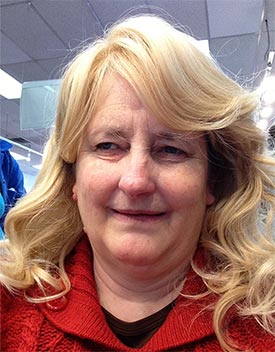Story Commentators
Anne Harlan Prather
Comment on “‘Boot’ Camp”
The cyclic nature of the Starmasters' flight need would mean that the first thing any enemy would do if it captured a Starmaster would be to keep him from flying until he broke. So the Navy, in its pragmatic way, used boot camp to measure the absolute length of a Starmaster's flight clock—with humorous results.
Comment on “Stranger”
This piece is unabashedly an excerpt. I comes from Road to Paradise, the second book of a trilogy about Camille St. LeCaz. I include it here because it portrays, in very few words, what a monumental effort it took for someone not suited to a piloting career to adjust to such a career.
Foreword Author and Story Commentator

Sourdough Jackson
Comment on “High Wings”
Heinlein, the engineering master, could not have written this story. Bradbury, the emotion master, might have, on one of his better days. Neither could have written the song.
“High Wings” is a song—and a tale—of leave-taking, and of hope. I first heard and loved the song decades ago, when my wife wrote and sang it. I wondered what story might lurk behind it. Now, her old friend has written it.
Tragedy and glory—the glory is obvious. The tragedy is that the engineer could not share in it, until it was too late.

HL Preston
Comment on “Mother”
“Mother” is an origin story, of a sort. It is also a coming-of-age story, an alternative-future anthropology, and a miniature: clear, brief glimpse into a world fully formed but not fully comprehended, or possibly not even fully comprehensible. Told from two perspectives, even then there is no sense of an omniscient narrator. There is music, and color, and psychic communication, and a glimpse “behind the burlap” of a Ren Faire circuit of this future. And a glimpse of a shard of the experiences of the author, herself a passionate harpist. Each of these stories may stand on its own, but I think they are best taken in the aggregate, like a pointillist painting, each dot is colorful in itself, but together they form a more comprehensive image.
Comment on “Weather Woman”
When I first read “Weather Woman” it was with no context: an interesting experience, but it raised many questions about the physics of the Starmaster talent and its interactions with the Starmasters in this universe. For example, if the planet skips through space every 100 years, and if the Weather Woman's selection of the probability stream in which the planet acts as a ship was crucial to that skipping, how did it happen 100 years earlier? Or 200? Or 300? Or do the storms themselves simply steer the planet elsewhere and the Weather Woman was only a witness to something that would have happened anyway—in which case, why was her ship putting the responsibility on her choice? Every symphony needs a climax or two: in the larger context of the stories surrounding it and leading up to it, not all of these questions are fully resolved, but in this moment, the dance of ship and Starmaster is performed/improvised to the raging music of a maelstrom in spacetime itself.

Rev. David Marshall
Comment on “Sojourner”
Great science fiction is always about people. Anne Prather gets that. From the moment you begin reading one of her stories, you are drawn into a wonderfully imagined alternate world with real people suffering real life problems. In her short story “Sojourner,” Prather writes of grief and suffering with a gracious hopefulness. The religion and faith she invents in “Sojourner” is full of quiet wisdom learned from life's most profound lessons, most of which seem to involve failure and loss. Sometimes, the light that shines from the darkness is the brightest.
Kathy Coyne (with Anne Prather)
Comment on “Vocations”
Every teacher longs to inspire students. It's the reason for teaching. Most of us get to see our students live out our teaching at some time. What we don't get to see as often, though, is the educational establishment's celebration of unconventional student accomplishment. In this story, nothing has changed.

Carol Vojir
Comment on “Awakening”
“Awakening” is set in a religious community, a situation Dr. Prather knows well from her upbringing. The religious background for the story establishes the context of expectations for the protagonist, a young woman nearing her rite of passage ritual. There is anticipation mingling with anxiety to begin. The story describes the process leading to the outcome of the rite of passage ritual and how that outcome impacts the young woman and her closest friend. You'll have to read the story to see how it ties into the theme, “Wings of Joy”!

Leslie Jordan
Comment on “Homecoming”
Anne Prather's Wings of Joy speaks of the joys and sorrows that space travel can bring, a theme explored by other writers of science fiction, such as C. J. Cherryh in her Merchanter's Luck, Sharon Lee and Lee Miller in Balance of Trade and other stories of the Liaden universe. The authors portray the difficulties of accommodating the needs of the human heart for friendship and family when the contingencies and economics involving space travel and space trade can tear relationships apart.
“Homecoming” is a particularly poignant story of longing for roots and family and the soul-threatening loss of human connections the exigencies of the star flight talent can bring.



